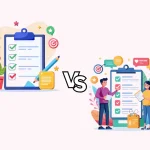
Patient Surveys vs Real Time Feedback Mechanisms
In today’s healthcare environment, collecting patient feedback is crucial for improving care quality. Healthcare providers commonly rely on two primary methods
Patient Surveys vs Real Time Feedback Mechanisms. Each has its unique benefits and limitations, making it essential to understand their differences and ideal use cases.
Patient Surveys in Healthcare: What Are They?
Patient surveys are structured questionnaires designed to gather feedback on various aspects of a patient’s experience in a healthcare facility. Typically administered after a visit, they offer detailed insights into service quality, facility conditions, and overall patient satisfaction.
How Do Patient Surveys Work?
A successful patient survey strategy involves careful planning and four main steps:
- Survey Design: Questions cover relevant aspects of patient care, ensuring comprehensive feedback.
- Distribution: Surveys are distributed post-visit via email, paper forms, or phone.
- Data Collection: Responses are stored in a centralized database, allowing for long-term analysis.
- Analysis and Reporting: Data is analyzed to identify trends, strengths, and improvement areas, providing actionable insights.
Benefits of Patient Surveys
The benefits of patient surveys include:
- Comprehensive Feedback: Detailed data collection on multiple care aspects, including service quality and staff behavior.
- Benchmarking and Tracking: Consistent data enables tracking of performance and improvements over time.
- Patient-Centered Insights: Surveys help identify patient needs, guiding patient-focused care strategies.
- Long-Term Planning: feedback supports strategic planning, aligning services with patient expectations.
- Regulatory Compliance: The survey meets regulatory requirements by documenting patient experiences and satisfaction.
What Is A Real-Time Feedback Mechanism?
Real-time feedback mechanisms collect patient input during or immediately after the healthcare experience, enabling providers to address concerns promptly. By collecting instant feedback, healthcare staff can improve the patient experience on the spot, promoting a more responsive approach.
How Real-Time Feedback Mechanisms Work?
Implementing real-time feedback involves these steps:
- Tools Selection: Choose digital tools like mobile apps, kiosks, or SMS platforms.
- Prompting Feedback: Patients are prompted to give feedback on specific aspects of their care while it’s fresh in their minds.
- Immediate Response: Staff monitors feedback in real-time, enabling quick high patient satisfaction.
- Continuous Monitoring: Ongoing collection allows providers to maintain high patient satisfaction levels.
Benefits of Real-Time Patient Feedback
Real-time patient feedback offers significant benefits, especially in fast-paced settings:
- Immediate Action: Issues are addressed instantly, improving patient satisfaction.
- Enhanced Engagement: Instant feedback collection leads to higher participation and more comprehensive data.
- Timely insights: Real-time data enables rapid adjustments in care delivery.
- Personalized Care: Tailors care based on immediate patient needs.
- Crisis Management: Early detection of issues prevents them from escalating.
Comparing Patient Surveys vs Real Time Feedback
When choosing between Patient Surveys vs Real Time feedback, it’s essential to understand their differences.
1. Timing and Relevance
- Patient Surveys: Offers a retrospective view of patient experiences.
- Real-Time Feedback: Provides immediate insights that are actionable on the spot.
2. Depth of Information
- Patient Surveys: Delivers board, comprehensive data on multiple care aspects.
- Real-Time Feedback: Focuses on specific touchpoints, providing targeted insights.
3. Data Collection Method
- Patient Surveys: Typically post-visit, through email, paper, or phone calls.
- Real-Time Feedback: Uses real-time feedback tools, like apps or LazyMonkey, during the visit.
4. Response Rates
- Patient Survey: May experience lower response rates due to survey fatigue or delays.
- Real-Time Feedback: Higher response rates as feedback is gathered instantly.
5. Resource Requirements
- Patient Surveys: Requires resources for design, distribution, and analysis.
- Real-Time Feedback: Needs robust technology and continuous monitoring.
6. Actionability
- Patient Surveys: Data aids in long-term planning.
- Real-Time Feedback: Allows immediate improvements and adjustments.
7. Implementation Complexity
- Patient Surveys: Straightforward, with structured questions and established methods.
- Real-time Feedback: Complex, requiring real-time response mechanisms.
8. Ideal Use Cases
- Patient Surveys: Best for long-term planning and assessing overall patient satisfaction.
- Real-Time Feedback: Ideal for addressing immediate concerns in dynamic settings.
Choosing Between Patient Surveys and Real-Time Feedback
When deciding between Patient Surveys vs Real real-time feedback mechanisms, consider the goals and context of your feedback collection. For long-term, in-depth analysis, patient surveys provide a well-rounded view, whereas real-time feedback is ideal for immediate adjustments in care.
Combining Both Approaches: By integrating both patient surveys and real-time surveys, healthcare providers can capture the full scope of patient experiences, ensuring high-quality, patient-centered care.
Conclusion
Both Patient Surveys vs Real Time Feedback mechanisms are essential tools in healthcare. Patient surveys provide comprehensive insights, aiding long-term planning, while real-time feedback supports immediate action and issue resolution.
By understanding the differences and benefits of each, healthcare providers can implement a balanced feedback strategy that enhances care quality, addresses patient needs promptly, and supports continuous improvement.
Frequently Asked Questions
What Is The Main Purpose Of A Patient Survey?
To collect detailed feedback on a patient’s healthcare experience for improvement and compliance.
How Does Real-Time Feedback Differ From Patient Surveys?
Real-time feedback is collected immediately, allowing instant action, whereas patient surveys are post-visit and retrospective.
What Are The Benefits Of Patient Surveys?
Patient surveys provide comprehensive feedback, track performance, and support patient-centered care and long-term planning.
Can Real-Time Feedback Replace Patient Surveys?
Real-time feedback offers immediate insights but is not a substitute for in-depth data from patient surveys; both are complementary.
When Should Healthcare Providers Use Real-Time Feedback?
Real-time feedback is best for addressing immediate patient concerns and making rapid adjustments in fast-paced environments.
Enhance Patient Care and NABH Compliance with LazyMonkey
LazyMonkey is your all-in-one solution for improving patient care, retaining more patients, and meeting NABH standards. Our powerful QR-based feedback tool enables you to capture real-time insights from patient feedback, discharge surveys, staff and doctor evaluations, and clinical research, while also streamlining inter-departmental communication.
Transform your healthcare facility today - reach out to us at hello@lazymonkey.in, or request a demo here!
Elevate Your Restaurant Experience with LazyMonkey
LazyMonkey’s QR-based feedback system helps you gather real-time insights from customers, track satisfaction levels, and enhance the dining experience. Get instant feedback on your menu, service, and ambience, and make data-driven improvements to boost repeat customers and reviews.
Improve your restaurant today – reach out to us at hello@lazymonkey.in, or request a demo here!
Empower Student Engagement and Campus Improvement with LazyMonkey
LazyMonkey offers a seamless way to gather student feedback, track satisfaction, and enhance campus life. From course evaluations to dorm feedback, our QR-based solution makes it easy to capture valuable insights and improve student retention.
Upgrade your university experience – contact us at hello@lazymonkey.in, or request a demo here!
Streamline Feedback and Drive Performance Across Your Enterprise/Franchise with LazyMonkey
Whether you manage one or multiple locations, LazyMonkey’s QR-based feedback system helps you gather real-time employee and customer feedback. Improve operational efficiency, track satisfaction, and make data-driven decisions to enhance brand consistency and growth.
Transform your franchise today – reach out to us at hello@lazymonkey.in, or request a demo here!
Enhance Customer Satisfaction and Service Standards in Banking with LazyMonkey
LazyMonkey empowers banks to capture real-time feedback from clients across branches. Improve customer experience, assess service quality, and ensure regulatory compliance with our QR-based solution, helping you retain clients and meet banking standards.
Elevate your bank’s customer care – contact us at hello@lazymonkey.in, or request a demo here!
Boost Customer Engagement and Mall Satisfaction with LazyMonkey
LazyMonkey’s QR-based feedback tool enables you to collect feedback from shoppers, track satisfaction, and enhance the mall experience. Gather insights on store services, cleanliness, and entertainment to create an unmatched customer journey.














